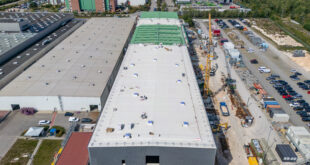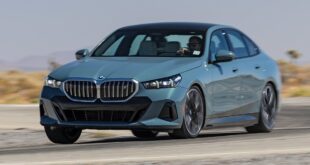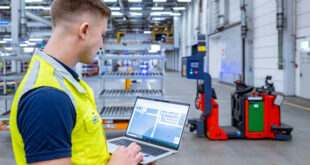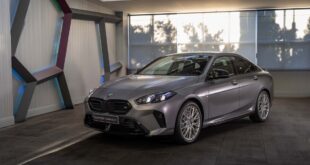 What will customers of the future want from a car? What will they need? In order to find the answers to these questions and to develop from them new ideas and innovations for the customers of tomorrow requires more than specialists in market and trend research. In specific areas of development, where the results directly impact on human beings, the BMW Group experts need to get to know their customers better. That is why, for example, the BMW Group Ergonomic Development department or those dealing with display and operating concepts are working together with customers and “guinea pigs†in order to learn more about them. On the one hand, the wide range of differing needs and characteristics play a crucial role in this – for example in the ergonomic layout of a new seat design – and on the other hand, it is also important to understand more precisely the demands of specific customer groups.In a current study by BMW Group Forschung und Technik, the focus is not placed on a specialised area of technology, but on the requirements and needs of a growing group of people: those in the over-60 age group. The study deals in particular with the needs and demands of this group with regard to display and operating concepts and the associated functions of BMW ConnectedDrive.
What will customers of the future want from a car? What will they need? In order to find the answers to these questions and to develop from them new ideas and innovations for the customers of tomorrow requires more than specialists in market and trend research. In specific areas of development, where the results directly impact on human beings, the BMW Group experts need to get to know their customers better. That is why, for example, the BMW Group Ergonomic Development department or those dealing with display and operating concepts are working together with customers and “guinea pigs†in order to learn more about them. On the one hand, the wide range of differing needs and characteristics play a crucial role in this – for example in the ergonomic layout of a new seat design – and on the other hand, it is also important to understand more precisely the demands of specific customer groups.In a current study by BMW Group Forschung und Technik, the focus is not placed on a specialised area of technology, but on the requirements and needs of a growing group of people: those in the over-60 age group. The study deals in particular with the needs and demands of this group with regard to display and operating concepts and the associated functions of BMW ConnectedDrive.
Learning from one and all.
In order to find out what a target group wants and needs, the development engineers explore deeply into the lifestyle of the study subjects. They want to learn how they live from day to day and how, to what extent and for what purpose they make use of technology inside and outside their car. In the course of the study, the experts of the BMW Group place particular importance not only on understanding the participants from a theoretical standpoint, but also on getting to know them as people.
The focus of the study is on the post-war generation who, thanks to the economic growth of recent decades, are well educated and well off. This generation is sharply distinguished from the pre-war and wartime generations in its awareness of standards and quality, a fact that is reflected in a new level of enjoyment of life.
The object of the study is to identify, on the basis of the knowledge gathered, areas of future potential and possible starting points for new customer-oriented developments in the field of displays and operation, and derived from these, in BMW ConnectedDrive functions. That is why the BMW Group experts have opted for a multi-stage exploratory and qualitative procedure.
A search in the literature on the current status of research led to the choice of several areas for special attention, ranging from fitness and leisure activities through to the family and personal values. These topics were then broadened and deepened in interviews with leading experts in market research, gerontology and product development. On the basis of this preliminary work, questionnaires were then developed for the customer study. A total of 30 people aged between 50 und 70 took part in the study, one third of them aged between 50 and 60, and two thirds between 60 and 70 years old. The younger group provided an insight into future customer trends – specifically in relation to their anticipated affinity with technology.
Once the participants had been selected, the lifestyle of the target group was examined. With the aid of a diary, the 30 participants documented their activities over five consecutive days and, of course, their everyday use of transport. Then 15 participants were visited at home by BMW Group experts. As well as having an intensive discussion, the experts were chiefly interested in sharing some experiences with the people they visited and seeing how they behaved in a variety of situations. During a car journey together, for example, the BMW researchers were able to observe the subjects’ driving style and discuss questions about their car with them. With the aid of small experiments, the developers than tested various functions in the car, such as the programming of music channels, use of the luggage compartment or setting the satnav. From the results of the discussions and observations, initial areas for potential modification can now be derived.
Better understanding of the target group – and a surprise.
The results of general market research show that Germany’s “pensionersâ€, in contrast to the previous generation, are not only more numerous, but also healthier, better informed and more prosperous. They are more au fait with technology and more active, as well as possessing higher standards and greater quality awareness. Added to these there is often a greater need for mobility. Through the study, it has been possible to widen this available information significantly, especially for the development areas of display and operating concepts and networked services. From common factors in the target group such as self-image and the importance of mobility, through to differences in the use of technology, for example, the study was also able to show what customers of the future will hope for from a car. For during the study it was possible, with the help of diary entries, to record 300 mobility events, of which some 80 per cent were associated with cars.
Asked the question about what they expect from a car, the participants in the study chiefly wanted, in addition to a high standard of interior convenience, specific assistance with driving. Functions that extend their skills, such as Park Distance Control or Surround View, were as positively valued and in demand as were functions that ease the driving burden, such as an automatic gearbox or an electrically closing tailgate. Many of these demands are already being met today by cars from the BMW Group and extensions are currently being worked on or have just reached the market – such as the hands-free tailgate opening function from BMW ConnectedDrive.
As for the use of infotainment provided in the car, the experts found in the study that the participants varied greatly in their acceptance of new technology, and especially in their ability to handle it. In addition to age-related differences – the younger participants tend to be more open to new technology – differences in personality type are clearly discernible: in general, there are techno-enthusiasts and there are those who are chiefly concerned with the utility of a technology. The latter only make use of a function or technology if it offers them personally a recognisable added benefit. The third type has strong reservations toward modern technology. The researchers also encountered mixed types and technical overlaps. For example, some test subjects did make use of an internet route planner, but then took a printout with them in the car as they did not have a navigation system in the vehicle, or felt that using certain navigation systems was beyond them.
The preferences of the test subjects in relation to in-car information provision are very varied and sophisticated. Numerous topics were mentioned, from information on local public transport connections, through traffic reports and warnings, all the way to parking or sightseeing information, including directions to the destination. What was important to most of the less technically-minded test subjects was simply to receive the right information at the right time, if possible without themselves having to perform many operational steps. This intuitive, personalised and time-, location- or mood-dependent information provision is identical to what other customer groups demand from their car.
This shows that, precisely from BMW ConnectedDrive’s angle, there are fewer age-specific demands on a car than was thought. Meeting the desire for personalised information provision – that is to say, adapted to individual needs – is taking on increasing importance. With its ideas and visions regarding future opportunities for interaction and new functions derived from them, the BMW Group is heading in the right direction. Examples of this are the Infotainment Assistant (see Chapter 2.2) and the research project into operation by hand gesture (Chapter 3.2), as well as the Emotional Browser in the
BMW Vision ConnectedDrive concept car.
Demographic change and ergonomics.
The impact of demographic trends also presents new challenges to the ergonomic layout of a vehicle. How physically mobile will the customers of the future be? How can a comfortable entry and exit from the vehicle be preserved? These are just two of many questions that occupy the ergonomic development team – made up of engineers, designers, sports scientists, and specialists in orthopaedics and ergotherapy – with a view to adapting the cars of the future as closely as possible to human characteristics.
Ergonomics and the feeling of comfort.
All the functions in the car which are designed to ease the burden on the user also serve to enhance ergonomics and the feeling of comfort. Here the border between the two areas is fluid. Something that is a necessary ergonomic requirement for one car user represents a gain in convenience for another. If an electrically opened tailgate is an added convenience for one, it is an absolute must for the other – due to physical size or restricted mobility. Seat belt extenders or a reversing camera are further examples of features that provide direct utility as well as a gain in convenience.
“We design our vehicles for people from birth up to advanced age. We pay attention to children and child seats when designing cars, just as we do to the requirements of an aging society. And in the same way we observe very closely the anthropometric data and changes in the entire world population.†(Peer-Oliver Wagner, Head of Ergonomics and Convenience) Geometric layout of the cars for customers.
As a matter of principle, BMW Group cars are ergonomically designed for body measurements that range from the fifth percentile of women right up to the 95th percentile of men. In this way BMW Group cars meet the convenience requirements of 95 per cent of the population.
Yet the application of vehicle geometry always involves a little prediction too. This is because a car project which the ergonomists are currently working on does not go into production for another six or seven years and then has a model life that is as long again. Added to that is the age of the car itself: the geometric design of the vehicle must still fit the customer in 20 to 25 years’ time. And it is a fact that body measurements alter not only in the course of one lifetime, but also from one generation to the next.
Accelerated change in body measurements over the generations.
In order to find out how the anthropometry, or body measurements, of the population is changing over time, the BMW Group took part in Germany’s mass measurement programme “SizeGERMANY†in 2008. That enabled the development staff to obtain up-to-date anthropometric data and, by comparing it with data already available, show how the population has evolved. However, the ascertained change in body measurements affects not only height but also girth. On average, both are continuing to increase and at the same time the span between the extremes is growing ever larger. Up to now, an average increase in height of approximately 1.5 centimetres every ten years has been observed. However, from about 2025 onward a definite levelling-off of this trend is expected. This is not true of girth, which the experts believe will expand continuously.
And demands on interior vehicle geometry are not only changing at a national level. If we look at the international distribution of BMW Group customers, big markets have grown up in recent years whose customers make different demands on the the geometric layout of a vehicle. For example, in China the average height of a man is 1.69 metres, whereas men in Germany are on average 1.78 metres tall. In addition to this, there is a wide spread between upper and lower limits: if we take Germany and China together, the range is even wider – from 1.49 metres (for the 5th percentile of women in China) up to 1.93 metres (for the 95th percentile of men in Germany). At the same time, customers differ with regard to their proportions, for example the ratio of torso length to leg length. All these requirements have to be integrated into the layout of the cars. For this reason the BMW Group makes use of numerous international databases on body measurements so that the vehicle geometry can be adapted to international markets.
Studies of physical mobility by the BMW Group.
Not only do a person’s body measurements change in the course of a lifetime, but so does the person him- or herself. Aging has an effect on various characteristics, skills and abilities, such as vision and sense of hearing, but most of all on coordination, agility and strength.
“If you ask the professionals in this field what the demographic trend means in practical terms, you often only get vague answers. The problem lies in the fact that the range of physical characteristics has expanded. Today there are 70-year-olds who jog every day and 40-year-olds who remain sedentary all day. For us, one very interesting dimension is mobility. The aspects of mobility which we have so far perhaps simply associated with the concepts of youth or age, we now want to place an objective basis so that we can work with them.†(Maximilian Amereller, doctoral student in the Ergonomics and Convenience Team)
In contrast to the well-researched body measurements, there is data on mobility which has scarcely been evaluated up to now. Though it is known that mobility tends to diminish with age, there is little information about the actual situation or about disparity within the age groups. Nor do we have measuring instruments or specialised methodologies that are capable of measuring mobility in a standardised and uncomplicated way. Yet mobility is a critical factor when it comes to using a vehicle.
In order to gather usable data and to be able to adapt the layout of vehicles to demographic trends even better in the future, a current study is engaged in the measurement of physical mobility and how to assess it objectively in relation to factors such as age, gender, body ratios and state of fitness. A similar situation applies to the strength parameter.
Aims of the study.
The study is being carried out on people without any serious physical disabilities. A series of 84 individual movements is examined, covering the entire range of bodily motion. The aim is to find out in what movements the test subjects are restricted and whether these restrictions display a specific distribution due to certain factors. This may provide important clues for the future design of solutions and functions in the vehicle. These discoveries then have to be objectivised in the form of anticipated customer demands and characteristics, so that an ergonomic evaluation of vehicle geometries and designs can be carried out on the basis of these mobility profiles. The results of the study should also produce a percentile breakdown, that is to say a classification of the population in terms of physical mobility.
Currently the necessary measurement methodology and appropriate instrumentation are being developed, so that data gathering can start as early as this year. After the methods and apparatus have been validated, mass measurements will take place, on the basis of which percentilised mobility data will be produced for people aged from 17 to 85. This data will be fed into existing software systems for virtual validation in order to facilitate, at an early stage and without building a model, a more precise evaluation of design and prototype work with regard to spatial concepts, customer functions and convenience. The BMW Group’s long-term aim with this study is the complete classification of the physical requirements of customers in the form of a comprehensive, internationally valid and constantly expanding database. “For us, man is the measure of all things – including cars.†(Peer-Oliver Wagner)
Virtual study of getting in and out of cars.
Getting in and out of cars represents a specific case of a mobility event. Today, most ergonomic concept development and subsequent implementation is already being performed virtually. It means that, even in the initial phase of the project, it is possible to generate target data which it is necessary to achieve in order to reach a prescribed high level of comfort. These targets form an important reference point for the vehicle developers at a subsequent stage. For the entry and exit scenario, this could not be done virtually until now. Both entry and exit from a vehicle require movement of the whole body and are thus among the most complex sequences of movements relating to a vehicle. Furthermore, a large number of vehicle measurements have to be fed into the evaluation, which also have a mutual impact on each other.
“The degree of comfort in getting in or out of a car is influenced by the vehicle geometry and by the individual body measurements. For this reason, it has usually been necessary up to now for complete prototype models to be built for us to be able to judge the effect of vehicle geometry on movement as well as the ‘discomfort experience’ of various test subjects.“ (Peer-Oliver Wagner)
However, this is about to change: the specialists of the BMW Group are currently working on a procedure by which complex entry and exit events can be virtually simulated and evaluated for the first time. The great advantage lies in the fact that even at an early stage – without having built a prototype – it is possible to make valid assessments of the comfort of an entrance and its suitability for a vehicle and the target group in question. What were once subjective impressions of test subjects are now objective, measurable and thus comparable data.
And this is how it works: using data for planned vehicle geometry and the mobility data from the BMW Group’s database, the tool calculates a simulation of the entry or exit movement. The calculated movement is then analysed and assessed. Factors for assessment are firstly biomechanical parameters such as apparent strength in the joints. Secondly, since the surroundings of the vehicle play a part in entry, the simulation and assessment also take account of different scenarios, such as getting out in a narrow parking slot. This indicates how far the geometry meets the demands of comfort and ergonomics, at what point critical patterns of movement appear, and how they can be optimised.
The long road to simulated motion.
Before the BMW Group specialists could simulate motion at all, they had to create a database from many pieces of motion information to which the simulation could refer. In the course of an extensive data gathering exercise, the movements of numerous real test subjects getting into a car were recorded and digitalised in a variable entry model.
The model is fitted with force sensors and force measurement pads in the footwell, on the steering wheel and on the door, which can record how much force is exerted at what point in time during entry in each area. Infrared sensors and a motion capturing system (familiar from the film industry) make it possible to record the entry and exit movements of the test subjects. From these, data on motion and force are digitally reconstructed. The recorded movements are then transferred to a virtual human model with muscles and a skeleton, so that the strains on the individual muscles can be illustrated and reproduced. For even movements that can scarcely be picked up by eye may require a high expenditure of force and can thus be uncomfortable. The human model was then validated by a comparison of the calculations with measurements actually taken and with an external database.
In total, well over 2,000 recorded entry and exit movements provide a basis for the simulation. The variable model enabled the development engineers to simulate every entry and exit geometry within the BMW Group, from that of the BMW Z4 right up to that of the BMW X5.
“When validating the motion simulation we quickly saw how good the calculated values were, even in the early phase of testing. The simulations come very close to reality.†(Raphael Bichler, biomechanics specialist in the Ergonomics and Comfort Team)
Assessing motion.
Once the database and calculation model for the motion simulation have been set up, the next stage is the assessment. The challenge here lies in assessing the entire movement through time and not only parts of or extracts from it. In order to be able to classify the ergonomic quality of a movement, the development engineers compare it with a predefined, optimal entry scenario. This “Less Restricted Motionâ€, an entry movement without geometric hindrances such as the entry opening or roof pillar, serves as a reference for the movements to be assessed.
In addition to parameters such as the angle or forces of joints, the assessment also allows observation of specific parts of the body. Comparison with the reference movement then makes it possible to identify and optimise tight spots, obstacles or excessive exertions. For all the parameters, affinity values are calculated from which an overall value – the affinity coefficient – is then formed. This affinity coefficient shows whether the entry movement closely matches the reference or not. In this way, for example, vehicle concepts can be compared with each other objectively. Thus the ergonomic experts of the BMW Group are ensuring that, in the future too, people will be able to get into “their†cars in comfort, regardless of their size, age and nationality.
 BMW.SG | BMW Singapore Owners Community The Ultimate BMW Community – Established Since 2001
BMW.SG | BMW Singapore Owners Community The Ultimate BMW Community – Established Since 2001


























